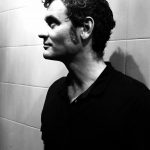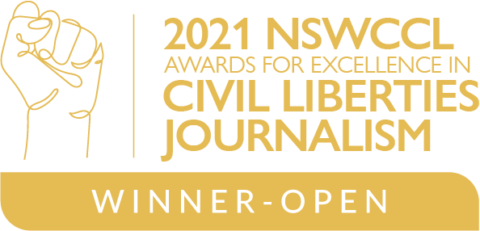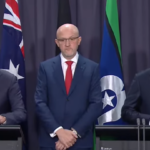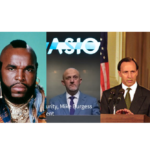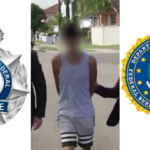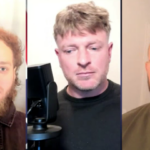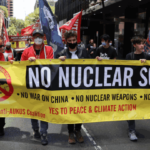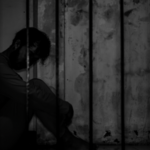ASIO Chief Warns that All National Security Threats Are Set to Escalate
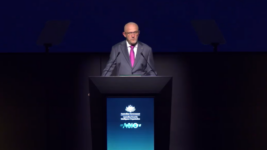
In delivering his sixth annual threat assessment on Wednesday 19 January 2025, ASIO director general Mike Burgess shifted the focus from “past and present threats” to those of the future, and in providing a national security outlook to 2030, he revealed that the road ahead involves the “complex, challenging and changing security environment” becoming “more dynamic, more diverse and more degraded”.
“Many of the foundations that have underpinned Australia’s security, prosperity and democracy are being tested: social cohesion is eroding, trust in institutions is declining, intolerance is growing, even truth itself is being undermined by conspiracy, mis- and disinformation,” the top spy explained.
“Similar trends are playing out across the western world.”
Burgess raised the war in Ukraine, the impact of COVID and the Gaza genocide, or “the war in the Middle East”, as contributing to this changing security environment.
Although Burgess does note that Gaza has “not yet directly inspired terrorism in Australia”, despite major party politicians having cried terrorism repeatedly in relation to a spate of questionable antisemitic attacks.
Three of ASIO’s main security concerns, espionage, foreign interference and politically-motivated violence, are “flashing red” right now, and all other key areas of concern are likely to join over the next five years, and the terrorism threat having been raised to ‘probable’ last August, is not likely to be lowered by 2030, while the rise of neo-Nazis is likely to continue.
“The result of all this will be a dynamic security environment with an unprecedented number of challenges and an unprecedented cumulative level of potential harm,” Burgess warned the Australian public on 19 February, and he added that the nation “has never faced so many different threats at scale at once”.
Rising foreign interference
“ASIO investigations have identified at least three different countries plotting to physically harm people living in Australia,” the ASIO director general explained. “In a small number of cases, we held grave fears for the life of the person being targeted.”
“In one operation, a foreign intelligence service wanted to silence an Australia-based human rights activist,” he continued. “The scheme involved tricking the unsuspecting activist into visiting a third country, where the plotters would be waiting. They planned to arrange an accident that was anything but accidental, with the objective of seriously injuring or even killing the activist.”
ASIO stepped in to prevent the activist leaving Australia and averted that situation. And Burgess also pointed to a “different hostile foreign intelligence service” that had plotted to kill one or more “human rights advocates” on local soil that it had considered “opponents”.
The top spy raised “coercive repatriations”, which involves foreign actors applying so much pressure to a national from their own country living in Australia, which can entail threats to family or frozen assets overseas, until the target voluntarily returns to whatever fate awaits them in their country of origin.
Burgess also mentioned the increasing practice of foreign governments using proxies to do their “onshore dirty work” here, with some of the local proxies that are employed being duped, while others know exactly what they are up to. And the top spy warned that it’s likely “state-sponsored terrorism or criminal proxies” will carry out large-scale sabotage attacks moving into the future.
Conflating Jewish people with Israeli atrocities
“In the polarised, grievance-rich environment I’m describing, social cohesion will remain strained, and we can expect spikes in communal violence,” Burgess continued.
“As the term suggests, the promotion of communal violence refers to activities that are directed to incite violence between different groups in Australia, so as to endanger the peace, order or good government of the Commonwealth,” he further made clear.
“Australia’s Jewish community is seeing this firsthand.”
Burgess suggested that antisemitism had been festering in this country prior to the Gaza genocide, but he doesn’t make clear as to where. But he did add that Israel’s actions in Gaza have given “some antisemites an excuse”, with a key reason for rising antisemitism in this country being due to “Jewish Australians” being “increasingly conflated with the state of Israel”.
“Narratives originally centred on ‘freeing Palestine’ expanded to include incitements to ‘kill the Jews’,” Burgess continued. “Threats transitioned from harassment and intimidation to specific targeting of Jewish communities, places of worship and prominent figures.”
But this rendering of the development of the antisemitic crimewave is skewed, as the early graffiti and arson incidents were accompanied by messaging that stated “Kill Israel” or “Fuck Israel” and it wasn’t until a period of politicians making the conflation themselves in order to demonise these politically motivated acts as a form of religious hatred that the messaging began to target Jews.
Many Jewish Australians don’t adhere to the settler colonial Zionist doctrine that underpins expansionist Israel, yet this dangerous conflation, which has been propagated by Israel since the 1970s in order to deflect criticism of its apartheid regime, has been used to ensure that all Jews are being targeted by the initial anti-Israel attacks, prior to the messaging turning to one of Jewish hate.
“The new normal”
Burgess further outlined that he was declassifying some of the ASIO five-year outlook to inform the public about it, because we “cannot counter a threat if we do not recognise it”, and many of us don’t understand the “new normal”.
The top spy then explained that the current ‘probable’ terror threat does not involve the same type of environment when it was last set at probable in 2014, as terror threats are no longer as easy to discern.
The ASIO boss added that agents are finding individuals who’ve combined “antithetical ideologies” to create “hybrid beliefs”. People are now “self-radicalising” over short periods, when this used to occur over “an extended time period”. A decade ago, extremists were motivated by family, however these days, the most likely individual is “a lone-actor, from a family previously unconnected to extremism”.
In terms of neo-Nazis and far-right extremist groups, Burgess explained that the “greatest threat of violence” related to them doesn’t come from core members, but rather “from individuals on the periphery”.
Based on last year’s ASIO terrorism investigations, Burgess set out that less than half were cases involving religiously-motivated terrorism. And as Muslims have usually been charged over terrorism with a religious motivation, it would appear that more than half of last year’s incidents deemed terror were carried out by white supremacists or the new category of “mixed ideologies”.
The overwhelming majority of offenders last year were minors, acting alone and were unknown to intelligence or police beforehand. And none of these attacks were related to the Middle East or were directed by foreign actors.
So, the main type of potential terrorist in Australia is a young, likely white, racist person under the age of 18, or one that is ideologically confused. Eighty five percent of the minors investigated by ASIO are male. Most of these minors have been born in this country. And the median age of individuals that ASIO launches terror investigations against is 15 years old.
The future, according to Burgess, is “a generation of digital natives”, who are vulnerable to radicalisation and are more influenced by the online world than the real world.
Bleak, to say the least
“I am acutely aware that this year’s federal election will be held in a security environment characterised by eroded trust in institutions, mis- and disinformation, incidents of politically motivated violence and attempts at foreign interference,” Burgess told those gathered in the audience at the ACT’s Ben Chiefly Building on Wednesday.
“Ensuring our elections remain free, fair and peaceful is business as usual for ASIO,” the top spy added. “We have already established specialist teams and operations to work with the Electoral Commission and other partners to protect the integrity of the poll.”
So, Burgess appears to be laying this all out for the nation, so that constituents can too be vigilant against the rising threats of the next five years, as he too identified that human intelligence is usually the best intelligence that is available to agencies like his own, and such intelligence is as important to ASIO right now, as it was during the cold war period.
“The future threat environment will be more difficult than anything we have seen in at least fifty years,” Burgess reiterated in rounding off his speech. “Increasing tensions in our society, geopolitical competition and technological advances will create simultaneous, cascading and compounding threats.”
“I can assure you ASIO will use all of the tools we have available to identify and counter these threats,” the top spy said in ending.
